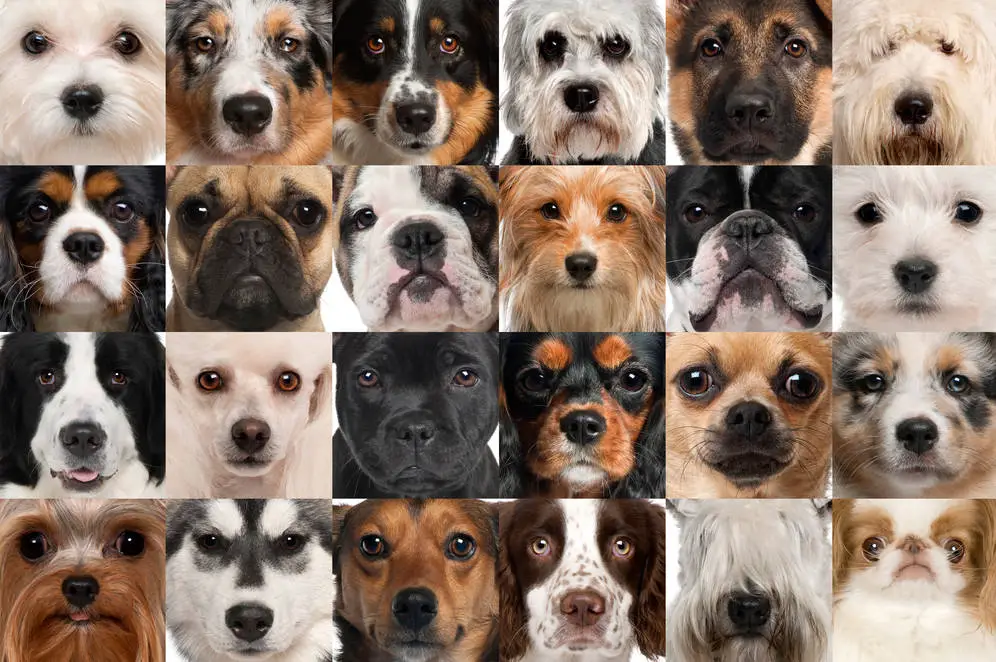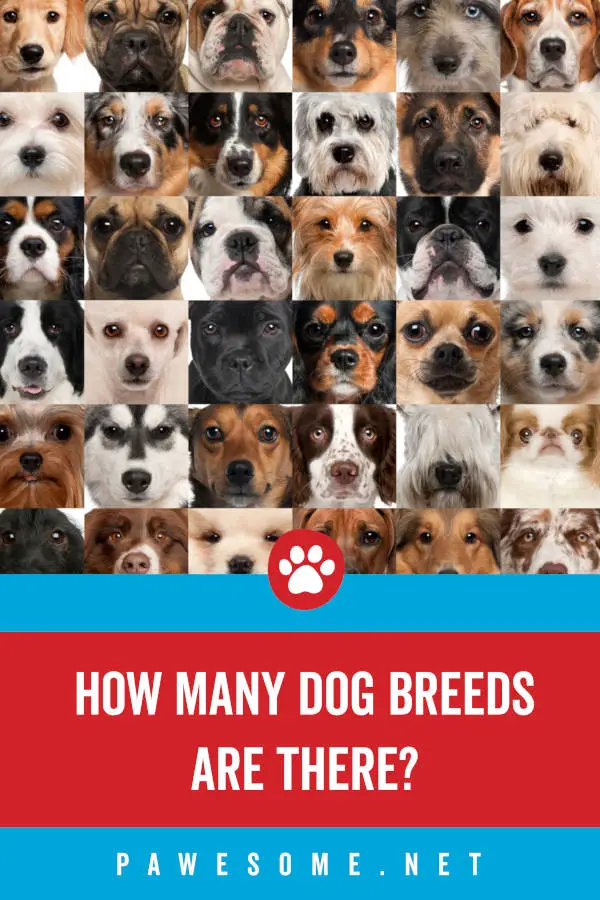 Your little one wants you to get a loyal friend and you have decided to go pet shopping. You may have some idea of the breed you want or you might only have some vague idea about the kind of dog you want.
Your little one wants you to get a loyal friend and you have decided to go pet shopping. You may have some idea of the breed you want or you might only have some vague idea about the kind of dog you want.
A visit to the pet store though can leave you confused. They will have a variety of breeds, and even if you have already zeroed in on one, seeing another equally cute and adorable breed will tempt and confuse you.
Have you ever wondered how many dog breeds are there in the world? What you see in a pet store may be just the tip of an iceberg! According to the World Canine Organization (Fédération Cynologique Internationale, FCI), there are around 347 breeds of dogs that have been classified into 10 groups based on their function primarily and area of origin secondarily.
Though this is the largest internationally accepted registry of dog breeds, there are many other varieties that can be classified as separate breeds but are not.
We’ve quickly rounded up the 10 categories and their defining characteristics, along with some fascinating history.
The Origin of the Dog Breeds
The earliest archaeological suggests that the dogs were first domesticated about 14,000–15,000 years ago in the Middle East and Central Europe and were morphologically distinct from grey wolves.
They had a smaller body size and wider crania, with a noticeable stop on the face and a shortened, crowded jaw. The fact that they clearly were identified as belonging to dogs and not wolves also suggests that they had been domesticated quite some time before, letting them evolve differently from their wild ancestor. These findings also lead to the belief that the dogs evolved from Asian wolves.
Subsequently, the oldest dog remains were discovered in western Russia, and radiocarbon dating suggests them to be at least 16,000–20,000 years old. These varieties are similar in size to the grey wolves and their cranial proportions are similar to that of the Great Dane.
Further studies also reveal that hybridization between wolves and dogs must have been responsible for the growing varieties of dog breeds. In recent times, crossbreeding between dogs has given rise to some more varieties of dog breeds.
Related: 17 of the Most Popular Westie Mixes You’ll Love
Ten Groups of Breeds
The 10 groups identified by the FCI are divided based on their purpose or function or their appearance and size. These are:
- Sheepdogs and Cattle Dogs, other than Swiss Cattle Dogs: As the name suggests, these dogs were used as livestock guardian or pastoral dogs that guarded sheep and other livestock in farms.
- Pinscher and Schnauzer, Molossoid Breeds, Swiss Mountain and Cattle Dogs and Other Breeds: They were called pinscher either because they caught vermin on the farm or because of their clipped ears.
- Terriers: Mostly small, wiry, game and fearless, they were originally bred to hunt vermin.
- Dachshunds: A short-legged, long-bodied, hound-type dog breed, it is also called the wiener dog or the sausage dog. It was bred to smell, chase and flush out badgers and other animals living in burrows. The miniature dachshund was used to hunt small animals such as rabbits and mice. In the Western United States, they help to track wounded deer and hunt prairie dogs.
- Spitz and Primitive Types: Spitzes typically have long, thick and mostly white fur, pointed ears and muzzles. They were bred selectively for hunting, herding and pulling sleds.
- Scenthounds and Related Breeds: Scent hounds use the power of smell to hunt rather than sight. They are considered to have the most sensitive noses among dogs.
- Pointers and Setters: Pointing dogs are also called bird dogs and were used to find game. Also referred to as gundogs, they are of three types:
- Retrievers
- Flushing dogs
- Pointing breeds
Since they would point their muzzle towards the game, they came to be called pointers. Pointers, selectively bred from dogs with abundant pointing and backing capabilities, start developing hunting instincts from about two months of age.
- Retrievers, Flushing Dogs and Water Dogs: As the name suggests, the retriever retrieves the game for a hunter and is divided into three categories:
- Retrievers
- Flushing spaniels
- Pointing breeds
When a hunter shot his prey, the retrievers would fetch it without causing any damage. They are bred because of their soft mouths and readiness to please, learn and obey.
- Companion and Toy Dogs: Toy dog refers to small breeds of dog or those such as spaniels, Pinschers and terriers that have been bred down in size. Lapdogs are also toy dogs, but not all toy dogs are lapdogs. The lapdog represented status, was useful as a watchdog and would also keep the owner safe from fleas.
- Sighthounds: Unlike scenthound, sighthounds chase the prey primarily by sight and speed.
Each of these groups is further divided into subgroups of dog breeds based on the country or region of origin.
This does not mean that the particular breed originated in that place but that that was the first nation to recognize and register the breed. That region will then hold the right to lay down the standard of these breeds, specifying the ideal qualities of a dog of that particular breed.
So you will come across some surprising classifications. Like the Australian Shepherd originally was created in the United States. The Pharaoh Hound is from Malta and not Egypt, as the name suggests. France, Germany and Great Britain lead the world in creating new dog breeds.
Related: Top 8 Dog Breeds With Webbed Feet
Loyalty, Their Creed
Many of these categories may make no sense to most of us. We don’t have a pet for hunting or herding but simply for the joy of it. But knowing the breed lets you know what their characteristics are.
For instance, some are too proud to display affection while some others may be all over you, cuddling and wanting to be cuddled. Some are difficult to train and others, willing to do your bidding. Some being outdoor types will need lots of exercise while others may prefer to curl up for the most part of the day.
But whatever their individual characteristic, you will find that each variety is equally loyal and the best friend you always wanted.

